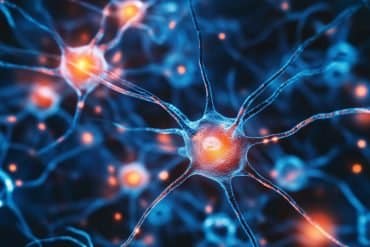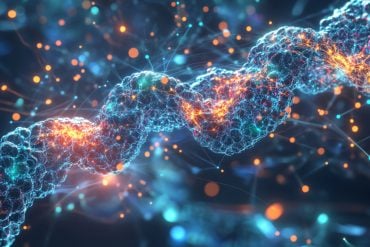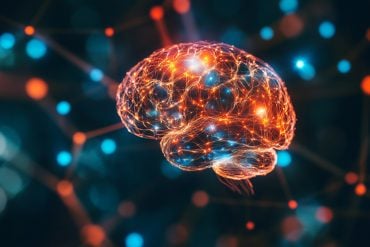Summary: Researchers have identified a specific form of autism marked by the presence of an excessive amount of synapses in the cerebral cortex. The abnormality may be linked to aberrant mTOR protein activity, a regulator of synapse production.
Source: IIT
The autism spectrum is marked by a high degree of heterogeneity, with symptoms and dysfunctions at a neurological level having different degrees of severity and impact.
Researchers at the Istituto Italiano di Tecnologia (Italian Institute of Technology, IIT) and at the University of Pisa have identified a form of autism caused by a specific neuronal alteration: the presence of an excessive number of synapses in the cerebral cortex.
This discovery, published in the journal Nature Communications, might help guide the development of future pharmacological treatments designed to correct these variations.
The research group includes Alessandro Gozzi, Coordinator of the Centre for Neurosciences and Cognitive Systems (CNCS) at IIT in Rovereto, Michael Lombardo, senior researcher at IIT, and Prof. Massimo Pasqualetti from the University of Pisa. Gozzi and Lombardo are performing research on the brain with resources provided in part by finance from the European Research Council (ERC).
More specifically, experimental observations in animal models using magnetic resonance imaging revealed that an excessive number of synapses, i.e. the microscopic protuberances that send and receive signals amongst neurons, produce dysfunction in brain circuits that are crucial for brain function and social communication.
The researchers further showed that this alteration can be linked to aberrant mTOR protein activity, a key regulator of the production of synapses and a potential target for pharmacological treatment. The investigators confirmed this notion by showing that, when mTOR-hyperactivity is pharmacologically inhibited, the number of synapses returns to physiological levels, completely restoring the functionality and connectivity of the circuits involved.

Based on these results, the researchers then used machine learning methods to investigate whether this specific circuit dysfunction could be identified and singled-out in publicly-available brain scans of people with autism, thereby defining a specific form of autism.
This activity revealed that a subgroup of scans do exhibit cerebral connectivity dysfunction very similar to that seen in the murine model. Importantly, a subsequent genetic decoding showed that the identified circuital dysfunction can be mechanistically linked to aberrant mTOR protein activity.
“This work is part of a larger research program aimed to map brain connectivity and understand neurodevelopmental disorders at our Research Centre in Rovereto.”, told Alessandro Gozzi, coordinator of CNCS at IIT.
“Our results might help decode the mosaic of autism, which in fact is a heterogeneous group of problems and causes. The challenge that lies ahead of us is now the identification of all the remaining pieces of the autism mosaic, which might enable the future development of precision therapy targeted to specific subsets of autism.”
“This study shows”, concluded Pasqualetti, “just how important it is to juxtapose advanced models for the study of the functioning of our brain alongside clinical research, both to understand which molecular and cellular alterations could be involved in the origin of the pathology; and to test, on the same models, experimental pharmaceutical protocols or therapeutic interventions which could ameliorate or even correct the cellular alterations observed in the pathological condition”.
Funding: The research study has been supported by grants from European Research Council, European Union’s Horizon 2020 – MSCA programme, and Simons Foundation.
About this autism research news
Author: Valeria delle Cave
Source: IIT
Contact: Valeria delle Cave – IIT
Image: The image is credited to IIT
Original Research: Open access.
“mTOR-related synaptic pathology causes autism spectrum disorder-associated functional hyperconnectivity” by Marco Pagani, Noemi Barsotti, Alice Bertero, Stavros Trakoshis, Laura Ulysse, Andrea Locarno, Ieva Miseviciute, Alessia De Felice, Carola Canella, Kaustubh Supekar, Alberto Galbusera, Vinod Menon, Raffaella Tonini, Gustavo Deco, Michael V. Lombardo, Massimo Pasqualetti & Alessandro Gozzi. Nature Communications
Abstract
mTOR-related synaptic pathology causes autism spectrum disorder-associated functional hyperconnectivity
Postmortem studies have revealed increased density of excitatory synapses in the brains of individuals with autism spectrum disorder (ASD), with a putative link to aberrant mTOR-dependent synaptic pruning. ASD is also characterized by atypical macroscale functional connectivity as measured with resting-state fMRI (rsfMRI).
These observations raise the question of whether excess of synapses causes aberrant functional connectivity in ASD. Using rsfMRI, electrophysiology and in silico modelling in Tsc2 haploinsufficient mice, we show that mTOR-dependent increased spine density is associated with ASD -like stereotypies and cortico-striatal hyperconnectivity. These deficits are completely rescued by pharmacological inhibition of mTOR.
Notably, we further demonstrate that children with idiopathic ASD exhibit analogous cortical-striatal hyperconnectivity, and document that this connectivity fingerprint is enriched for ASD-dysregulated genes interacting with mTOR or Tsc2. Finally, we show that the identified transcriptomic signature is predominantly expressed in a subset of children with autism, thereby defining a segregable autism subtype.
Our findings causally link mTOR-related synaptic pathology to large-scale network aberrations, revealing a unifying multi-scale framework that mechanistically reconciles developmental synaptopathy and functional hyperconnectivity in autism.







